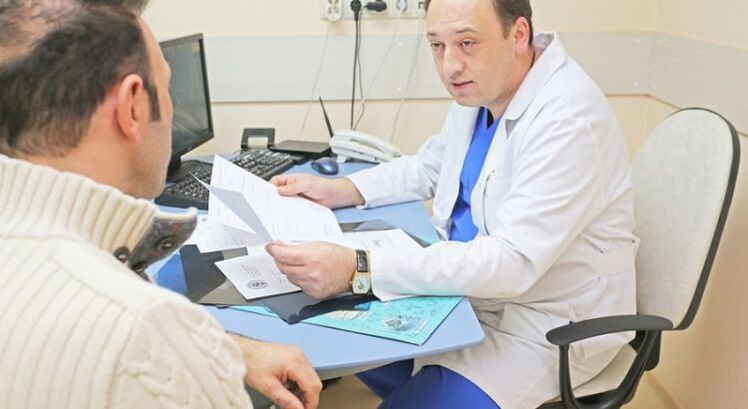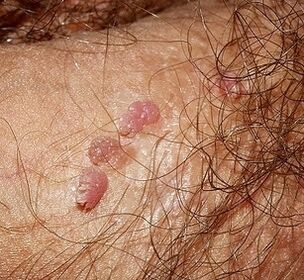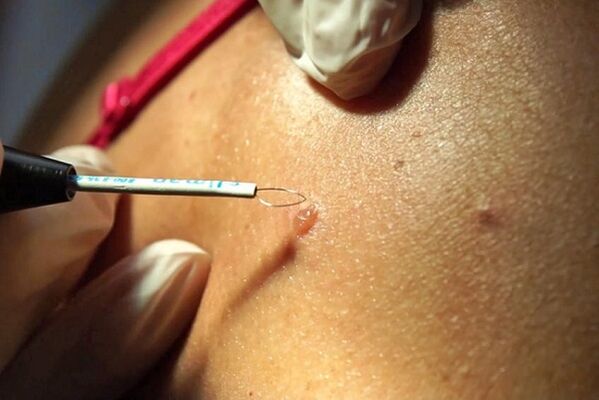
Most of the time, people are unaware that human papillomavirus (HPV) is present in their bodies.This is because papillomaviruses usually exist in a latent form and are suppressed by natural immunity.Problems arise when it gets out of control and starts to actively manifest itself in the form of growths in different parts of the body.Men are less susceptible to the virus than women, however, even in them, the effects of the virus can lead to serious problems such as penile papilloma.
reason
Viral DNA enters the body through microtears in the skin or mucous membranes.If a man's immunity is weakened, the first manifestations of HPV may appear several months after infection.
Up to 80% of cases of transmission occur through sexual intercourse.Barrier birth control minimizes the risk of infection but does not completely eliminate it.
Other routes of infection:
- Home style.The virus is spread through an infected person’s personal belongings: clothing, hygiene products, etc.The risk of transmission increases if there is damage to the skin, even a minor one.This pathway is characterized by infection with low oncogenic types of viruses.They do not cause serious health problems but can cause cosmetic imperfections in the form of genital warts, papillomas, and warts.
- From mother to child.If a mother is infected with HPV during pregnancy and childbirth and gives birth naturally, the child is most likely to be infected.
If a person has good immune defenses, the virus does not manifest itself and can remain in the body in a latent form for a long time.Therefore, it is not the infection with the virus itself that is dangerous, but the weakening of the immune system, leading to the activation of HPV.
There are many factors that influence the likelihood of virus hardening:
- chronic disease;
- hormonal problems;
- Wrong choice of contraception or no contraception at all;
- viral infection;
- Alcoholism, smoking, or long-term use of antibiotics;
- Frequent stress.
All of these factors can have a negative impact on the immune system.If there is not one stimulating factor in a person's life, but multiple factors, this will lead to faster development of papillomavirus.
symptom
Usually papillomas appear only externally, but can occur in some casesNon-specific symptoms:
- Itching and burning during sex;
- Pain when the papilloma is touched;
- Urine accumulates in the folds of the penis;
- There is an unpleasant odor in the affected area.
Additionally, tumors can grow and affect not only the penile area, but also the anus and pubic bone.

What do papillomas look like?
Papillomas on the penis are small tumors.At first, it may appear alone, but without proper treatment, the number of papillomas will increase.At the same time, they can blend into each other.
This new growth resembles flesh-colored or pink cauliflower inflorescences.Most often, they are located on the foreskin, head and frenulum area.Less commonly, they are diagnosed in the urethra and scrotum.Papillomas may also appear as small white papules that appear in long rows.This form is typical for the positioning of the frenulum area.
One manifestation of HPV is Buschke-Levenshtein genital warts.It is characterized by rapid growth, prominent size, and resistance to various treatments.It occurs due to several existing papillomas and genital warts merging together to form a large affected area.The presence of Buschke-Levenshtein genital warts is dangerous because the cells that are altered by it can easily develop into cancer.
Which doctor should I contact?
Typically, urologists diagnose male papillomas.If you have genital warts in the anal area, you may also want to consult a dermatology and venereology specialist or a proctologist.However, for removal of the papilloma, a referral to a surgeon is usually made.In general, diagnosis is carried out in several stages:
- The urologist examines and interviews the patient.A verbal interview is necessary to assess the patient's lifestyle and determine the cause of the viral infection.A visual inspection involves assessing not only the condition of the penis, but also of adjacent organs - the scrotum, anal area.This is a necessary condition to complete virus location.
- Submit urethral smear.Determine the presence of various sexually transmitted diseases.
- PCR.This analysis not only shows the presence of HPV in the body, but also likely identifies its type.
- Meatoscopy.This procedure is to check the urethra to see if papillomavirus has affected the frenulum.
- After papilloma removalThe doctor may order a biopsyAssess the status of distant tumors.This is necessary to eliminate the risk of cancer and ensure that the papilloma is benign.
In this case, it is recommended to check both sides.Often, women are also infected with a type of papillomavirus.If you only treat a man, he is likely to get sick again after a while.
Why are papillomas dangerous?
Human papillomavirus is often associated with other related diseases.The presence of papillomas in the glans penis area can cause urine to pool in the folds.This creates conditions for the emergence and growth of various microorganisms, leading to infection.They can cause erosion around the papilloma and can lead to inflammation of the urethra and testicles.These illnesses are characterized by urinary problems, pain, and high fever.
Another danger is injury to the tumor, causing bleeding.This is because many blood vessels form around the papilloma to provide blood to the papilloma.Even minor injuries can lead to infection due to trauma.
Additionally, tumors can rub as they move, causing pain and discomfort in men.
HPV and cancer
When the virus first begins to spread, tumors are rare and benign.If left untreated, they can grow and merge with each other.Over time, the cells degenerate into malignant cells.Men are at particularly high risk of developing cancer if they are infected with a highly carcinogenic virus (type 16 or 18).They can lead to the development of penile and bladder cancer.
Papilloma Treatment
Treatment of HPV includes not only eliminating its external manifestations, but also strengthening the immune system to block the manifestations of the virus.To maintain immunity, immunostimulating drugs are used.
Ointments that inhibit viral reproduction and remove microscopic growths are effective antiviral medications.It doesn't always accomplish the task of complete removal, but it can prevent new growth from appearing.To stimulate the immune system, antiviral ointments are needed.The ointment does not remove the papilloma, but it helps activate immune system cells, which prevents their growth and development.

Removal method
There are several ways to eliminate new tumors:
- Laser removal.The papilloma is exposed to a laser beam, which completely burns away the growth.A crusty skin will form on the area and will fall off after a few weeks.Since there were no recurrences, the method was considered effective.The resection is performed under anesthesia.In this case, there is no bleeding and no scarring or scarring.
- Freezing damage.Papillomas were exposed to liquid nitrogen.It immediately freezes the desired area, the tumor on it is destroyed and dies.The disadvantage of this method is that it cannot control the depth of freezing damage.There will still be scab at the removed papilloma site, which will disappear after a while.
- Radiosurgery.The method operates on a similar principle to laser removal.Radio waves leave no scars, and a special spray is used for initial anesthesia before the procedure.There were no complications afterwards and the body recovered quickly.
- Electrocoagulation.Exposing the growth to an electric current eliminates the stems, and the papillomas disappear.Superficial anesthesia may be used if necessary.The procedure takes only minutes, is extensive and affordable.But this method will leave scars after healing.
- Surgical intervention.It is used in rare cases when a tumor becomes too large.It is performed under anesthesia and is characterized by long healing times and minimal trauma.The benefit of this approach is that it preserves the resected growth for histological examination.
The price of each method depends on the complexity of the job, the size and number of papillomas to be removed.
Please consult your doctor before choosing any method.He will tell you what method is best for your situation and tell you in detail how the procedure works.In addition, after resection of the tumor, it is recommended to remove the material for histological examination.This is necessary in order to determine whether the process of degeneration of benign tumors into malignant tumors has begun.This approach will help detect early cellular changes and prevent the spread of cancer.























